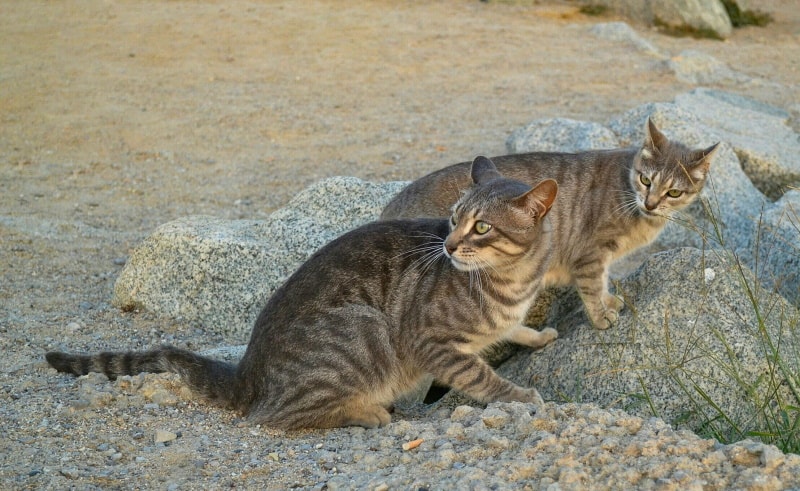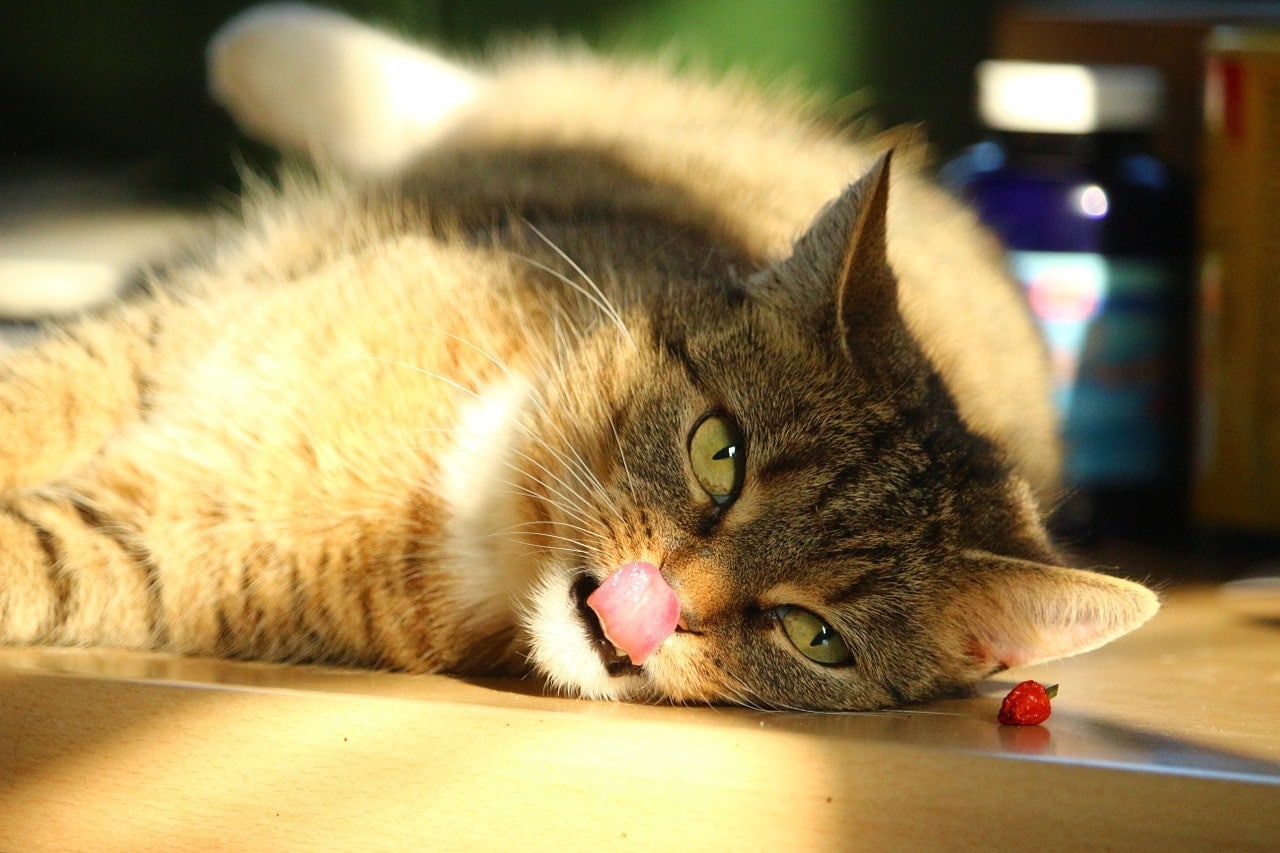19 Cornish Rex Colors and Patterns (With Pictures)
By Brooke Bundy
Updated on
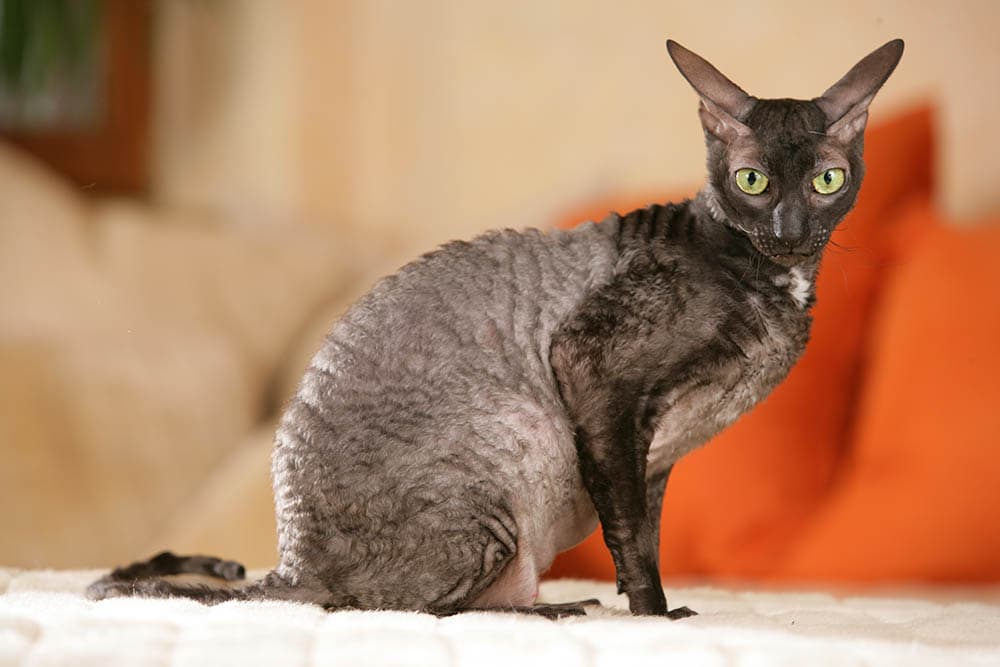
Click to Skip Ahead
The Cornish Rex is a fairly unique breed because they only have a single coat, which forms crimp curls close to their skin. The Cornish Rex is recognized for their short curly coat and low-shedding status rather than their coat color. Due to their wide gene pool and recent appearance on the cat breeding scene, the Cornish Rex is genetically capable of having virtually any coat color and pattern. Imagine a lilac-colored cat or a curly-haired calico. The possibilities are practically endless. Here is a little bit about the Cornish Rex along with 19 potential Cornish Rex coat colors and patterns to let your imagination start running wild.
Cornish Rex Characteristics
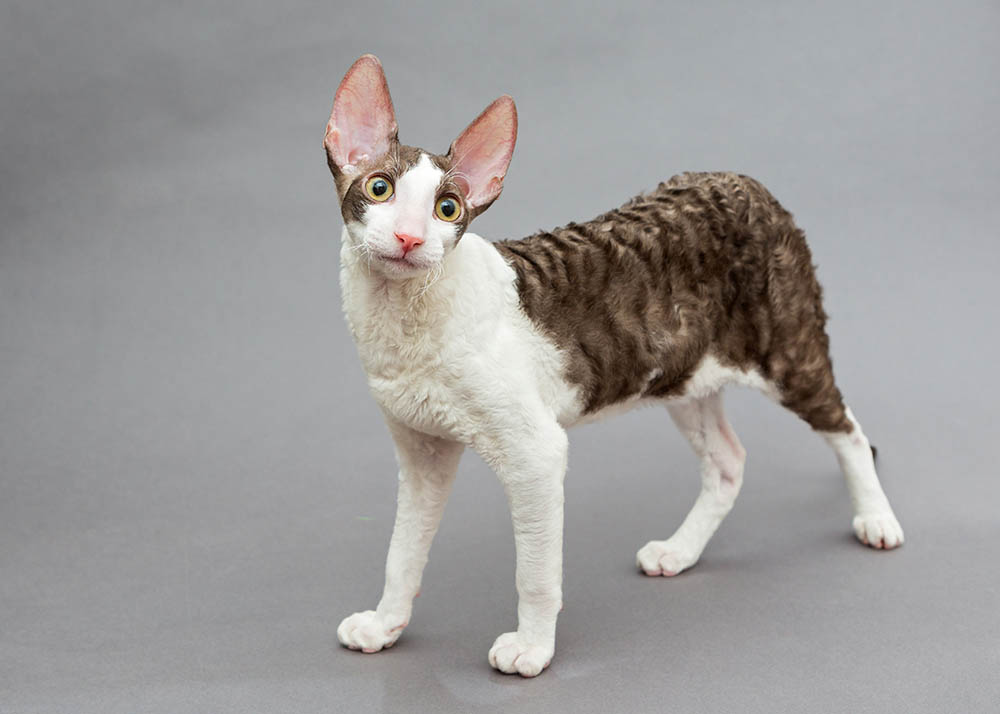
| Height: | 8–12 inches |
| Weight: | 6–10 pounds |
| Life Expectancy: | 11–15 years |
| Temperament: | Friendly, active, intelligent |
With tall limbs and scant hair, the Cornish Rex may appear fragile at a glance. However, their athletic prowess gives them an impressive muscle mass. The Cornish Rex is known for playing fetch like a Golden Retriever and likes to spend time with their family. They’re a small-to-medium sized breed with a round, petite head. Their large ears are always prepared to pick up the keywords on what’s next on the agenda, and they are known for their intelligence. This friendly breed usually gets along well with children and other pets, especially if they were socialized from a young age.
The 11 Cornish Rex Coat Colors
1. Blue
You’re not likely to find this shade of blue in your crayon box. Rather, a blue cat, like what you’d find in a Russian Blue’s coat, is a color in between a dark blue and charcoal gray. This beautiful coat looks absolutely stunning and appears to almost glow in soft light.
2. Black
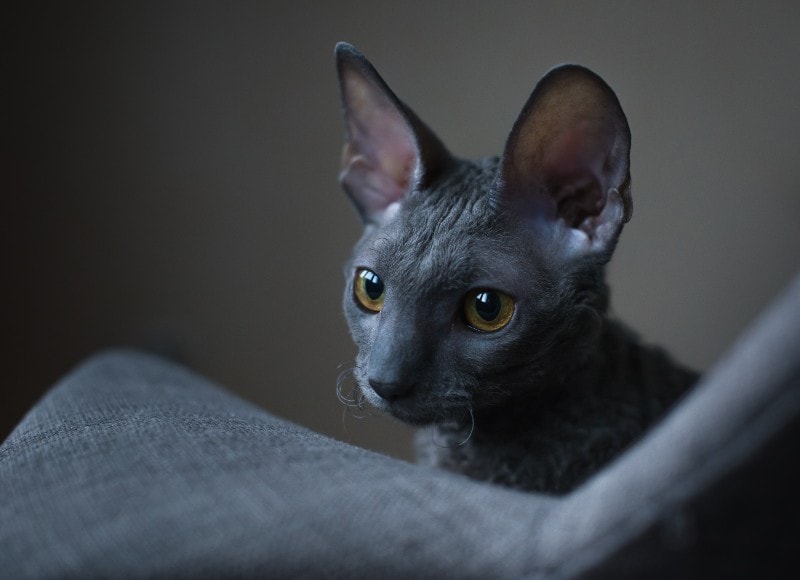
Consider yourself lucky if you find a Cornish Rex with a black coat. While black cats are fairly common, it’s pretty unusual to find a Cornish Rex with onyx hues.
3. Brown
Also known as chocolate or chestnut, brown is a very rare color for a cat’s coat. It’s basically the result of a genetic mutation that results in less black pigment (eumelanin) being produced.
4. Champagne

Imagine a dusting of pink on a light brown/gray cat. This dazzling coat color is known as champagne. It’s very close to cream, but has lighter hues.
5. Cinnamon
Warm and ready to curl up next to your pumpkin spice latte, cinnamon cats have a light brown coat with red hues. It’s absolutely gorgeous, and common for Abyssinians. It’s relatively rare for a Cornish Rex to have a solid cinnamon coat, but not impossible.
6. Cream
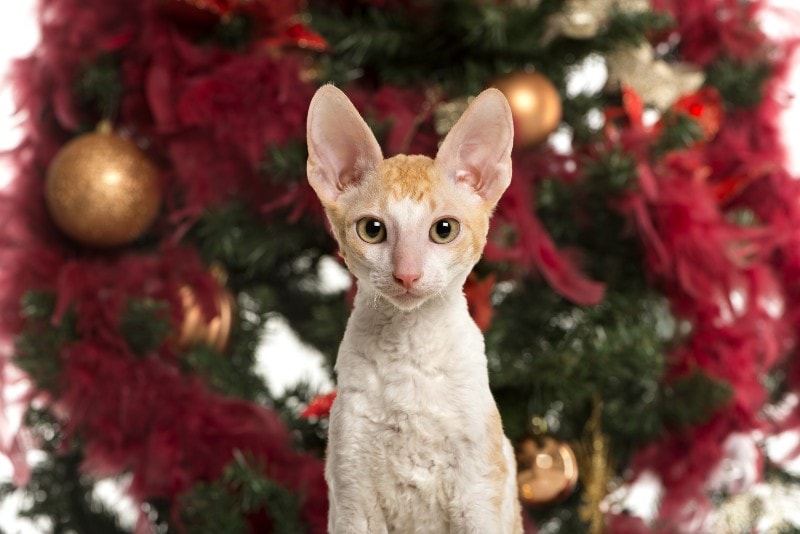
Think biscuits (your cat makes them all the time anyway). This color is in between the color of the buttery Southern staple and pure white. Some cream cats may even resemble a light-colored ginger.
7. Frost

We’ve never known a Cornish Rex to have an icy heart, but their coat may resemble a frozen field. Frost can be confused for white at first glance. However, a true frost-colored coat will have hints of gray.
8. Lavender
We’ve truly hit a gray area. Lavender cats are sometimes called lilac, frost, or champagne depending on who’s talking. While lilac and lavender are the same, there are a couple of subtle things that technically set them apart from frost and champagne classifications. Lavender basically describes a coat color that’s lighter than the Russian Blue, but not as light as frost, and not pink enough to be called a champagne.
9. Red
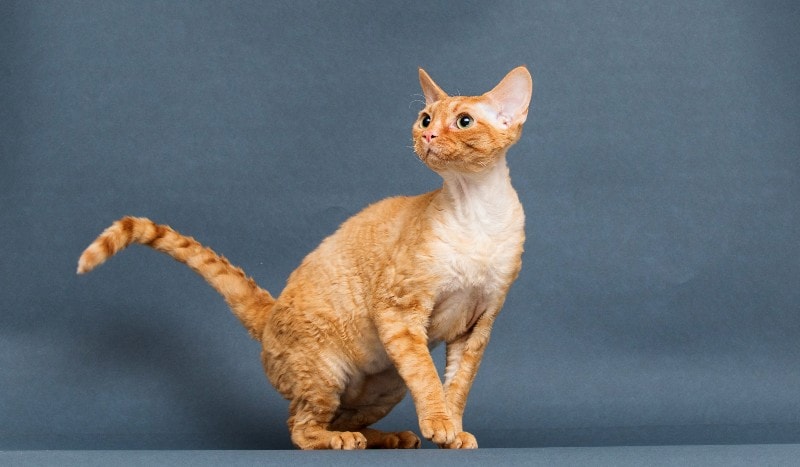
For all practical purposes, red is really a vibrant orange. Some red cats may take on more cinnamon notes than our beloved gingers, though, and for this reason red has its own category.
10. Seal
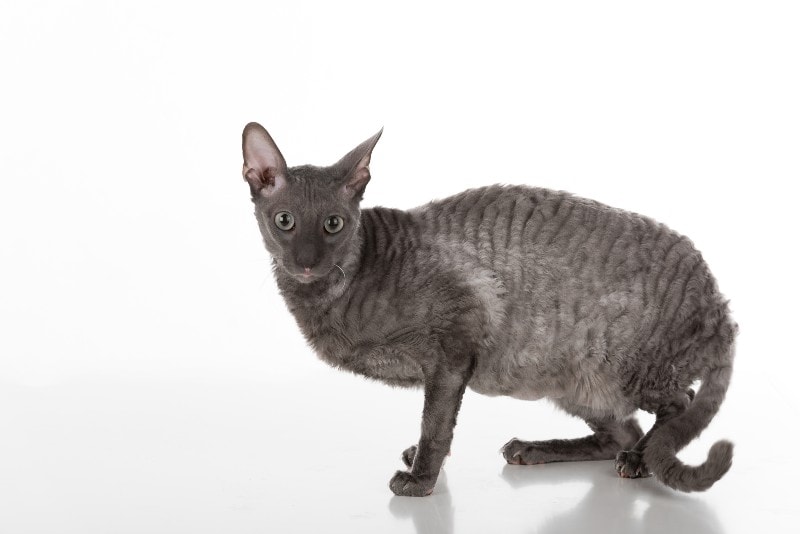
This dark gray beauty may look like it should be the queen of the sea, but all it wants is to claim its spot in your heart and (ahem) on your sofa.
11. White
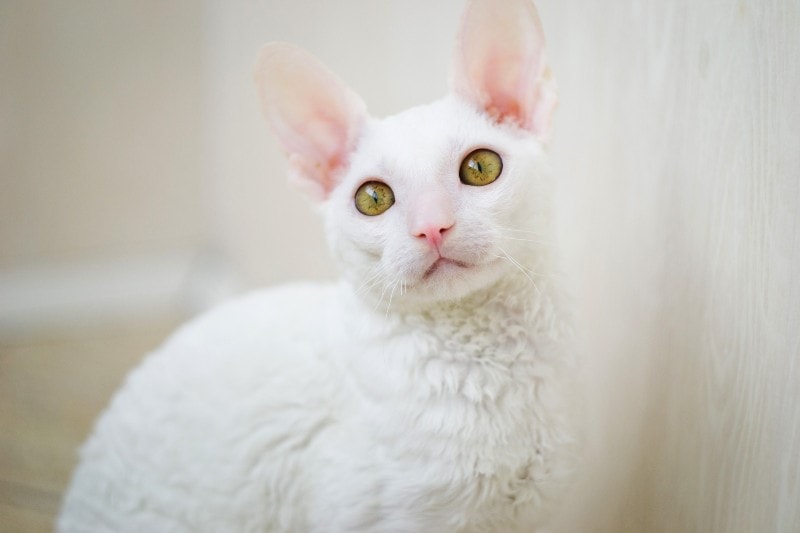
White is a common color for the Cornish Rex. At the very least, this breed frequently sports a white belly and chest, even if their coat features more than one color. While white is a beautiful color, there is a noted correlation between deafness and cats with white fur and blue eyes. According to Cornell University, 65 to 85 percent of solid white cats with two blue eyes are deaf. For this reason, intentionally breeding an all-white cat with blue eyes isn’t encouraged. However, if you find one waiting at a rescue, it’s always a good idea to take it home.
The 8 Cornish Rex Coat Patterns
1. Solid
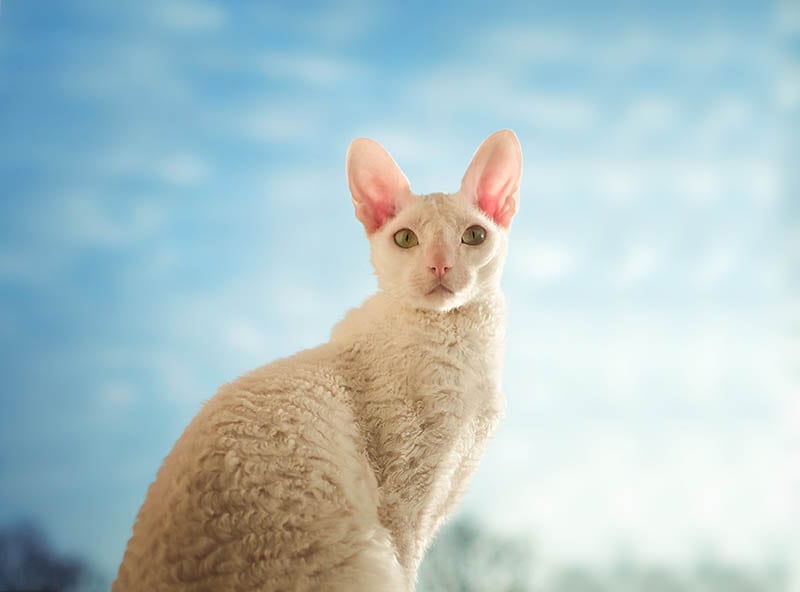
A Cornish Rex may only have one color. This isn’t very common but looks fantastic.
2. Bicolor
A bicolor coat pattern is probably what comes to mind when you envision a typical Cornish Rex. It’s hard to say that this pattern is the norm because the Cornish Rex doesn’t really have one major type of coat, but it’s very popular.
3. Tricolor/Calico
White makes up anywhere between 25% and 75% of a Calico cat’s coat. The rest of the coat is split between two colors, which are usually black and either brown or red. Almost all Calico cats are female. Males are extremely rare and almost always sterile.
4. Tortoiseshell
A Tortie cat has a black coat with random blotches of red. Like the Calico, the tortoiseshell population is almost entirely female.
5. Tabby
One of the most popular coat patterns of all time, the tabby can be distinguished by the “M” mark on their forehead. Tabby Cornish Rexes are striped with a ringed tail. Gray and black or orange and brown are the two most popular tabby color patterns.
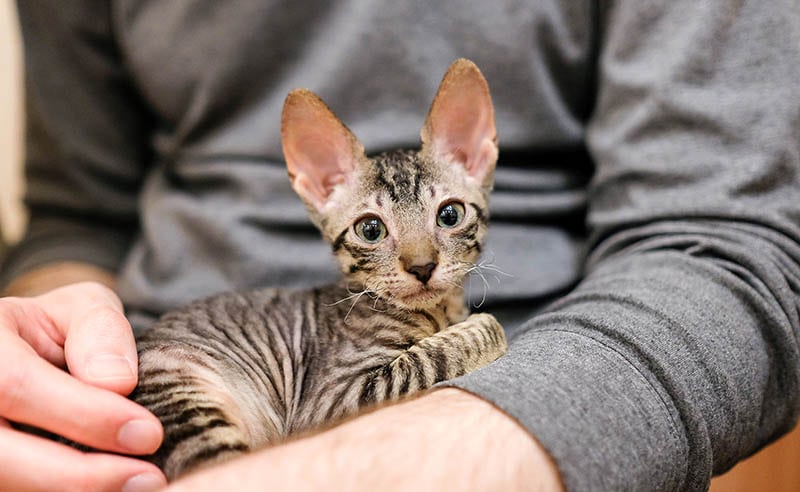
6. Ticking
For cats with a ticked coat, every individual piece of their fur features bands of light and dark colors. They don’t have a true coat pattern but have a beautiful palette of random colors all over their body.
7. Smoke
Similar to ticking, smoke colored fur is partially white and partially black. A smoke-colored cat may appear to be solid black from afar but you’ll see its true colors in good lighting.
8. Points
The Siamese is the most famous cat breed with points, but Cornish Rexes can have color points as well. These defined places are darker than the rest of their body, and are usually on their extremities, such as their face, ears, paws, and tail.
What’s the Difference Between a Cornish Rex and a Devon Rex?
The Cornish Rex and Devon Rex both hail from England. Their curly, single coats give them a similar appearance, and yet, they are two distinct breeds. The Devon Rex is much more laid back than the Cornish Rex, which may spend their day roving around your living room playing fetch and jumping to Olympian heights. The Devon Rex is also a little larger, weighing a pound or two more on average.
The LaPerm, Selkirk Rex, and German Rex cats are also considered “rex” breeds, even though they’re unrelated. “Rex” simply refers to the genetic mutation that makes their fur soft, short, and crinkled.

Conclusion
Unlike some breeds, such as the Russian Blue, which is always, well, blue, the Cornish Rex can be virtually any color or pattern combination under the sun. This is an exciting feature about the breed because the possibilities are endless. Ever since they were introduced in the U.K. in the 1950s, the Cornish Rex has found favor in the western world and their numbers are growing. Today, they’re one of the most popular cat breeds in the United States.
Featured Image Credit: absolutimages, Shutterstock
